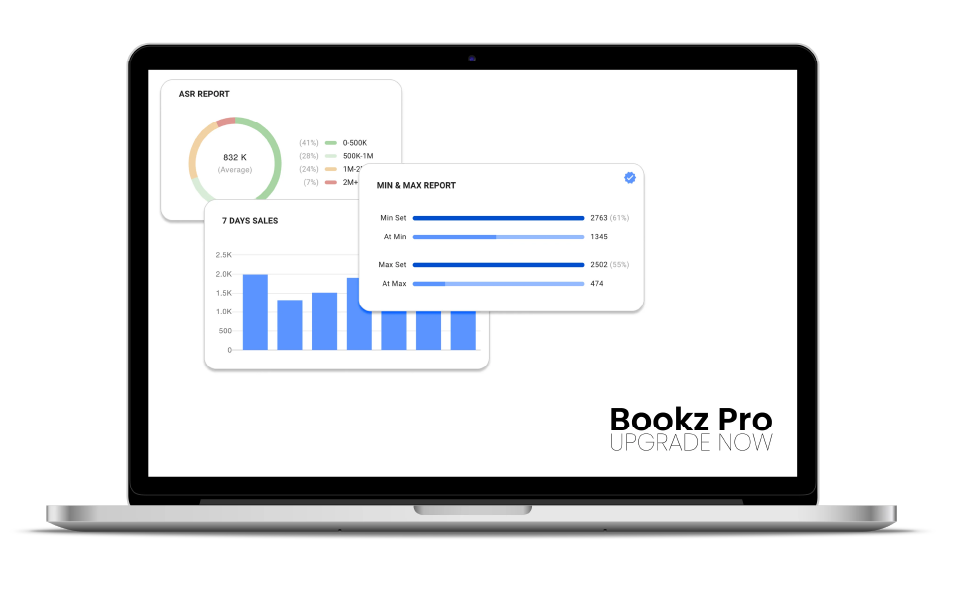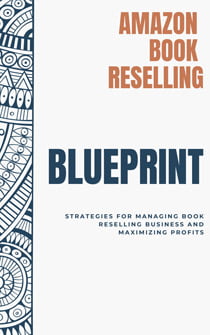What Is IPI Score Amazon?–Here Are Ways To Boost Yours

Introduction
Selling on Amazon is tricky! It’s difficult to keep up with all the things you have to do, including figuring out your customers, buying ads and shipping. Your Inventory Performance Index score (IPI), is one thing that matters. It shows you how well you manage your products. It can be frustrating to have a low IPI, but do not worry! We are here to assist you. Continue reading to learn why it is important to have a good IPI score and how you can improve it. Let’s get started!
What is the Amazon Inventory Performance Index (IPI)?
Amazon Inventory Performance Index, also known as IPI Score, helps sellers to understand how they manage their FBA Inventory. The score ranges between 0 and 1,000. Higher scores indicate better inventory management. Amazon will use this score to set storage limits for products. Amazon will restrict your storage space if your IPI is below 400.
There are ways to boost your IPI score and turn things around. In this post we will explore the IPI score and give you some tips on how to improve it.
Your IPI score is important for two main reasons:
- Your FBA storage limit is affected.
- This tool helps you to manage your eCommerce business better.
You need to have a high IPI score in order to run a profitable and successful business on FBA. You will learn more about IPIs and how you can improve them in the next section.
Factors Affecting Your IPI Score Amazon
Here are the key factors that influence your Amazon IPI score, along with tips to improve each one:
Excess Inventory
Inventory excess can have a significant impact on your IPI score. Amazon wants to get products to its customers quickly, so it labels items “excessive” if the supply exceeds 90 days based on demand. Overstocking can lead to serious losses for a business.
Amazon will tell you the number of units you have in excess and how to manage them. Amazon also offers three key metrics.
- Excess units: Units that cost you more to store than you would if you did something, such as lowering prices.
- Estimated total storage cost: Total costs you will incur if your inventory is left idle for 3 years, including any storage fees.
- Reduce Excess Stock Button: This tool helps you identify SKUs that have excess inventory, and manage your inventory.
You can manage your inventory more effectively by monitoring these factors.
Stranded Inventory
Stranded Inventory occurs when Amazon has products in its warehouse, but they do not have a live listing because of a listing problem. These items are not available to customers, resulting in lost sales and additional storage fees.
It’s easy to fix stranded stock. Amazon will tell you how many units have been stranded, and give you steps to fix the problem. You’ll receive an alert in your Dashboard if you have stranded stock.
This will take you to “Fix Stranded Inventory” where you can view which products are stranded and how many units have been affected. You will also be able to see the cause of the problem, as well as options to relist items. By dealing with stranded inventories quickly, you will be able to avoid unnecessary fees as well as get your products on the market.
FBA Sell-Through Rate
Your sale-through rate measures the number of units that you have sold and shipped over the last 90 days, compared to the number of average units in your FBA warehouse at the time.
Amazon will provide you with steps to improve your sell-through rate if they think it’s low. You can avoid storage fees by managing your storage.
Clicking on “Improve Sell-Through” will take you to the “FBA Inventory page,” where you can view various metrics, such as inventory age, estimated surplus units, and possible aged inventory fees. Amazon suggests ways to increase your sell-through. They might suggest creating a deal at an outlet, for example. Click the drop-down button for additional suggestions such as “Improve Keywords” or “Create an order to remove items”.
FBA In-Stock Rate
Amazon measures your performance by how well you maintain popular ASINs. This doesn’t lower your IPI score directly, but maintaining good stock levels will help to improve it.
Amazon calculates the sales that you lost in the past 30 days because of being out of stocks.
You can protect your IPI score by marking non-replenishable products like limited editions and discontinued items as “non replenishable”. Your IPI score will be improved by keeping your inventory under control. This will also increase your sales.
How to Find Your Amazon IPI Score?
Here’s an easy way to describe where you can find your Amazon IPI in Seller Central.
Access the Inventory Performance Dashboard to view your IPI Score:
- Login to your Amazon Seller Central Account.
- Select “Manage Inventory” from the “Inventory Tab”.
- Click on “Performance Tab” in the following page.
You will be taken to the Inventory Performance Dashboard where you can view your current IPI and related metrics. You can find your Amazon IPI Score in Seller Central by following these simple steps.
How to Calculate The Amazon Inventory Performance Index (IPI)?
The IPI score depends on four factors:
- Inventory levels: Amazon uses sales data to determine the maximum stock levels for each ASIN. Avoid exceeding these levels to prevent overstocking.
- FBA sales velocity: Your sales should grow faster than your inventory. Stock up to the minimum necessary to meet demand and avoid running out.
- Percentage unfulfillable Inventory: Manage unfulfillable stock by arranging pick-ups or disposals in order to avoid increased Amazon service fees should your metrics decrease.
- Quantity and speed of replenishment: Make sure you replenish your inventory in time to avoid stockouts. Stockouts are worse for you than an overstock, and they can be detrimental to both you and Amazon.
Amazon calculates an inventory ratio based on the percent of time that each FBA replenishable product was in stock during the last 30 day period, weighed by the average sale rate over the past 60 days.
As an example:
FBA in-stock rates = (% time in stock within 30 days)* (sales rate for 60 days)/(total sales rate for 60 days).
You can increase your IPI score by meeting Amazon’s requirements. This will allow you to enjoy unlimited storage of inventory and greater visibility on Amazon.
Best Ways to Improve Your IPI Score
Find out what you can do to boost or improve your Amazon IPI. This should become a part of your muscle memory. Use it to optimize your business.
All in One Software
for Book Sellers
Scout Better – List Faster – Reprice Smarter
Over 30% Business Growth
Achieved by Our Clients

1. Improve Your Sell-Through Rate
To stay “green” on your IPI graph, aim for a high 90-day rolling sales rate. If you sold 300 units of an item over 90 days, make sure that your inventory average doesn’t go above 400 units. This will keep your sell-through rates healthy.
Strategies to Boost Sales:
- Promos are a great way to get people to buy. A 20% discount on a seasonal product can increase urgency and boost sales.
- Increase visibility by using Amazon Sponsored Product. Targeted ads are a great way to reach eco-conscious shoppers if you have an eco-friendly line of kitchenware.
- Optimize keywords and SEO: Implement high traffic keywords into your product listings. If you are selling yoga mats, for example, include terms such as “non-slip,” eco-friendly,” or “lightweight” in order to attract more customers.
- Enhance product reviews: Encourage customers to write positive reviews. This can increase your credibility. Ask for feedback from buyers after the purchase.
2. Reduce Overstocked Inventory
- Avoid Excess Stock: Check the “FBA Inventory Page” regularly for advice on how to deal with excess stock. Consider taking action if, for example, you see that an item has not been sold in over 90 days.
- Utilize Amazon Outlet: Amazon Outlet is a great way to sell seasonal or overstocked items. Outlet deals can be used to clear out inventory if you still have holiday decorations left over after the current season.
3. Prevent Long-Term Storage Fees
To avoid any surcharges, remove all inventory from FBA before the 365-day mark. If you have toys that have not been sold for a year, place a removal order in order to avoid fees. You can use the Seller Central removal feature to have unsold products sent back to you, or disposed of. If you have 50 units left of a discontinued item, you can save money by removing them from your inventory before the year mark.
4. Address Listing Issues Proactively
Check for any stranded stock and fix the problem quickly to avoid paying storage fees. If a listing has been inactive because an image is missing, you should fix it immediately to make it available for sale. Maintain a healthy balance of sold and available inventory. For popular products, this should be within 30-60 days. Keep 200-400 items in stock if you sell 200 of your best-selling product each month.
5. Regularly Review Your IPI Score
Check your IPI weekly to identify issues and make the necessary adjustments. If you notice that your IPI score has dropped, look into the reasons and corrective action should be taken immediately. Set alerts on Amazon to be notified of significant changes to your IPI score. You can then respond to any problems quickly.
6. Optimize Inventory Management
Stock up on seasonal items. If you sell outdoor furnishings, for example, increase your inventory before summer to meet the higher demand. Update listings regularly for items that aren’t performing well by adding coupons, improving descriptions, or adjusting the price. Consider offering 10% off or improving the product description by adding better images and details.
These strategies and examples will help you improve your IPI score and inventory management on Amazon.
Increase Your IPI Score with All-in-One Software!

Amazon Book Reselling Blueprint
Read now, explore our full guide. Your revolution starts here. Subscribe to get the blueprint!
Amazon sellers face a challenge in boosting their IPI scores. You need to take into consideration a few important things to achieve the IPI score. Bookz Pro, with its sales and profit reports, insights and inventory data report, is a great tool.
Amazon Book Reselling Blueprint is a free guide I created to help you and other sellers sell on Amazon like pros. This guide covers all the essentials, including tricks and strategies, to help you take your business to the next level. It’s free to download! This guide will teach you how to overcome challenges as an Amazon Seller in a simple and easy manner.
Conclusion
For sellers, it is vital to understand your Amazon Inventory Performance Index. A higher IPI score translates to better inventory management, reduced costs, and increased profits. By maintaining a balanced stock level and addressing any slow-moving goods, you can improve your IPI and unlock even more Amazon opportunities. It’s important to keep track of your score, and make improvements. This is the best way to remain competitive in the ecommerce world.
Frequently Asked Questions
A higher IPI indicates better inventory control. A “good” IPI is usually considered 400. If your IPI score is higher than 400, you are doing a great job keeping your product in stock and meeting the customer demand.
Focus on improving your Inventory Performance Index by increasing sales, avoiding excessive inventory, preventing fees for storage, and dealing with inventory issues quickly. Follow these steps to improve your Amazon selling performance.
You should check your IPI weekly to identify any problems and make the necessary adjustments. Set up alerts on Amazon to be notified of significant changes in your IPI score.
To reduce excess inventory and boost your sell-through rate, consider running promotions, advertising your products, optimizing keywords, enhancing product reviews, and utilizing Amazon Outlet deals for overstocked or seasonal items
Avoid long-term storage charges by removing any inventory from FBA before the 365 day mark. Seller Central’s removal feature allows you to return unsold products to you, or dispose of them before the year mark.
Your IPI score does directly impact your ability to sell on Amazon. If your IPI score is below 400, Amazon will likely impose limits on the amount of inventory you can store, limiting your ability to add new stock.
Focus on improving your IPI score by reducing excess inventory and stranded items, increasing your sell-through rates, and making sure popular items are always in stock. Optimizing your listings and implementing targeted promotions can also boost sales.



